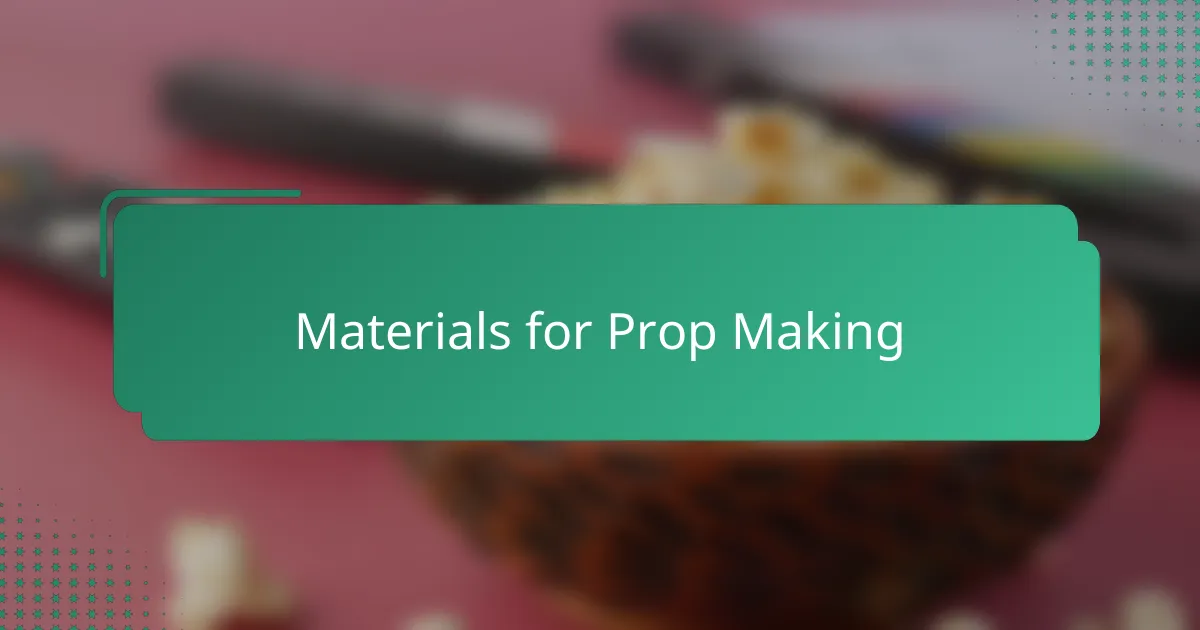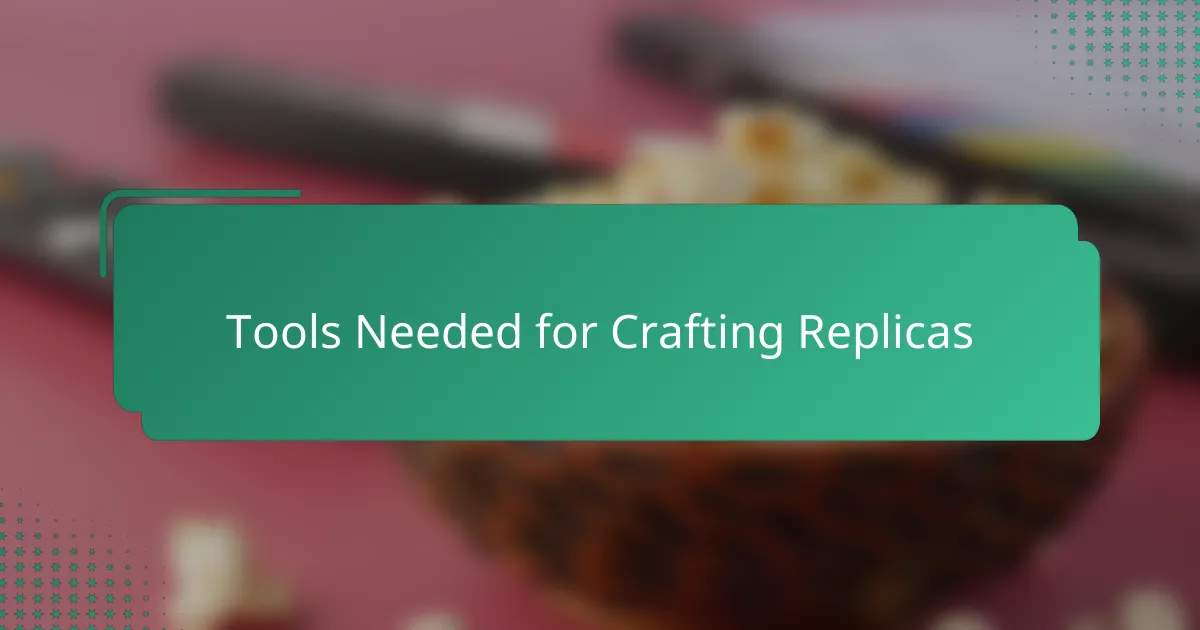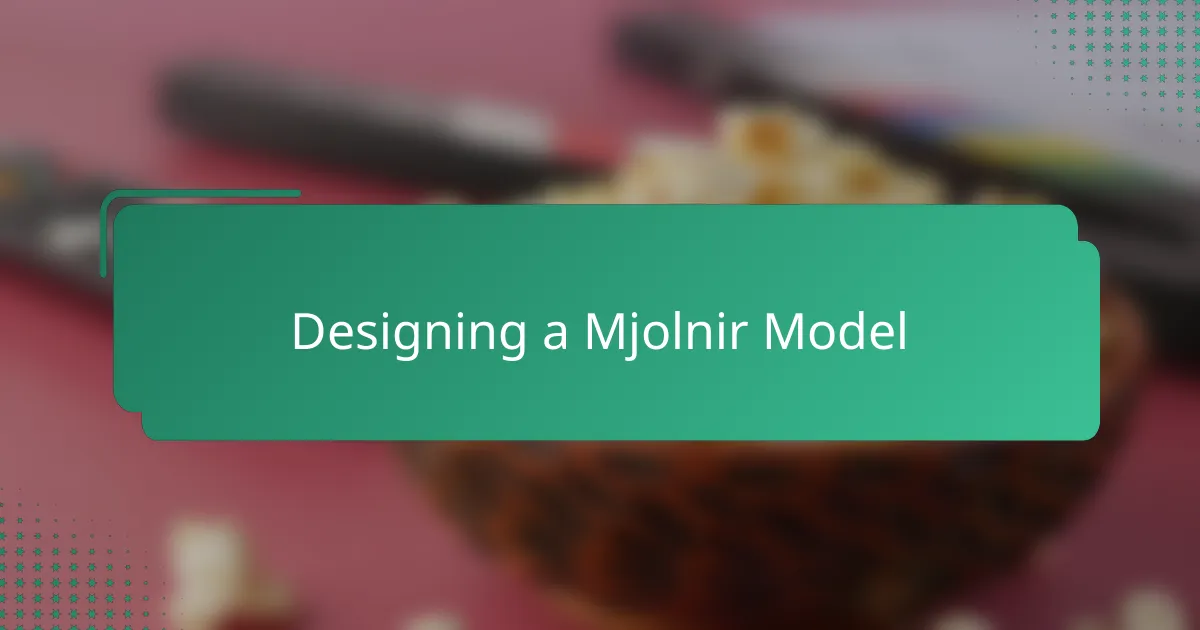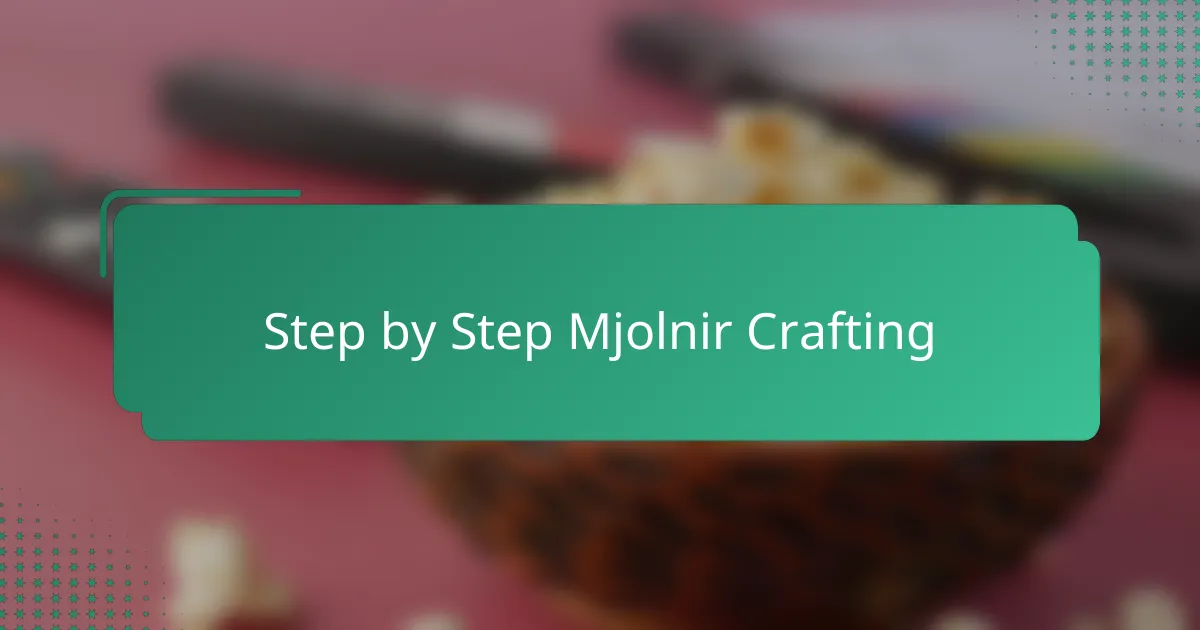Key takeaways
- Science fiction props require a blend of creativity and technical skill, with attention to detail crucial for believability.
- Choosing suitable materials like EVA foam and strong adhesives is essential for effective prop-making.
- The design phase emphasizes scale and integration of elements, emphasizing problem-solving alongside creativity.
- Layering techniques in painting, including the use of primer and weathering effects, enhance realism and depth in finished props.

Understanding Science Fiction Props
Science fiction props are more than just objects; they are tangible pieces of imagination brought to life. When I first encountered a prop on screen, I was fascinated by how these creations could evoke such strong emotions and immerse viewers in entirely new worlds.
Have you ever wondered what makes a sci-fi prop believable? From my experience, it’s the attention to detail that bridges the gap between fantasy and reality, turning a simple design into an iconic symbol. The craftsmanship behind these items demands both creativity and technical skill, making the art of prop-making a unique blend of science and storytelling.

Materials for Prop Making
Choosing the right materials is where the magic really begins for me. I remember staring at piles of foam, wood, and metal scraps, wondering which would best capture Mjolnir’s weight and texture without completely blowing my budget. It’s a delicate balance between realism and practicality—too heavy, and it’s impossible to handle; too light, and it loses its authenticity.
One material that surprised me was EVA foam. I had initially dismissed it as too flimsy, but once I learned how to carve and seal it, it became my go-to for shaping complex details. Its flexibility meant I could experiment freely, fixing mistakes without starting over, which made the whole crafting process feel less intimidating.
Have you ever struggled to find a glue strong enough to hold parts together without leaving a mess? I’ve been there, and choosing the right adhesives was just as crucial as picking the base materials. From hot glue to epoxy, each had its moment, teaching me that every component, no matter how small, plays a pivotal role in bringing a prop like Mjolnir to life.

Tools Needed for Crafting Replicas
When I started crafting my Mjolnir replica, I quickly realized that having the right tools made all the difference. Basic items like a craft knife, rotary tool, and sanding blocks became my closest companions. Without these, trying to shape and refine intricate details felt frustrating and nearly impossible.
One tool that truly surprised me was the Dremel rotary tool. I hadn’t used one much before, but it turned out to be indispensable for carving out Mjolnir’s elaborate designs. Its precision allowed me to mimic the hammer’s iconic engravings, which gave the piece that authentic, screen-accurate feel.
Have you ever spent hours trying to smooth out rough edges or make precise cuts by hand? I certainly have. Investing in clamps and a sturdy cutting mat saved me from countless mistakes and frustration. These small additions kept my workspace organized and helped me maintain control over each step, which is crucial when dealing with complex replicas.

Designing a Mjolnir Model
Designing the Mjolnir model was a thrilling challenge that pushed my creative limits. I remember sketching countless versions, trying to capture that perfect balance between the hammer’s massive solidity and the elegant Norse engravings. Have you ever stared at a reference photo, wondering how to translate every tiny detail into a physical form? That was me, obsessing over every curve and rune to make Mjolnir feel both powerful and accurate.
One thing I quickly learned was how important scale is in design. Too big, and it felt unwieldy; too small, and it lost that iconic presence. I balanced these factors by constantly measuring and adjusting my plans, which made the whole process feel like tuning a complex instrument. It’s amazing how the right proportions can transform a simple object into something truly legendary.
I also discovered that designing isn’t just about looks—it’s about how the model will come together in real life. I had to think about where seams would hide and how each piece would fit perfectly. This foresight saved me from countless headaches later on, teaching me that good design is as much about problem-solving as it is about imagination.

Step by Step Mjolnir Crafting
Starting with the basics, I began by cutting out the main shapes from EVA foam, carefully following the measurements I had fine-tuned during the design phase. Have you ever felt that mix of excitement and nerves when a rough form finally takes shape? That moment when your vision starts becoming something tangible is incredibly rewarding.
Next came the layering. I glued multiple foam pieces together to build up the hammer’s thickness, constantly checking the balance between sturdiness and weight. It wasn’t always smooth—sometimes the pieces wouldn’t align perfectly, forcing me to rethink my approach. But each correction brought me one step closer to that authentic Mjolnir feel.
The real magic, though, was in the detailing. Using a rotary tool, I engraved the intricate Norse patterns, which demanded patience and a steady hand. I remember pausing frequently, almost mesmerized by how these tiny lines transformed the prop from a simple block into a legendary artifact. It’s details like these that make all the effort worthwhile.

Painting and Finishing Techniques
When it came to painting Mjolnir, I learned that layering was everything. Starting with a primer created a smooth surface that helped the metallic paint adhere better, which made the final coat pop with that authentic, battle-worn look I was aiming for. Have you ever been baffled by paint peeling or uneven coverage? That primer step saved me from a lot of frustration.
I decided to use a combination of spray paint and hand brushing to get the right texture. Spray paint gave me an even base, but the magic really happened when I added weathering effects with a dry brush technique. Smudging dark tones into the crevices made the hammer look like it had seen countless battles, giving it a depth and realism that made me proud every time I picked it up.
Sealing the paint was another crucial moment. I opted for a matte clear coat to protect my work without adding too much shine, which kept the metal effect believable. Waiting for every layer to dry felt like an eternity, but seeing each finish come together made me realize that patience truly is a craftsman’s best friend. Have you ever been tempted to rush a project only to regret it later? I sure have, and this time, taking it slow paid off beautifully.


